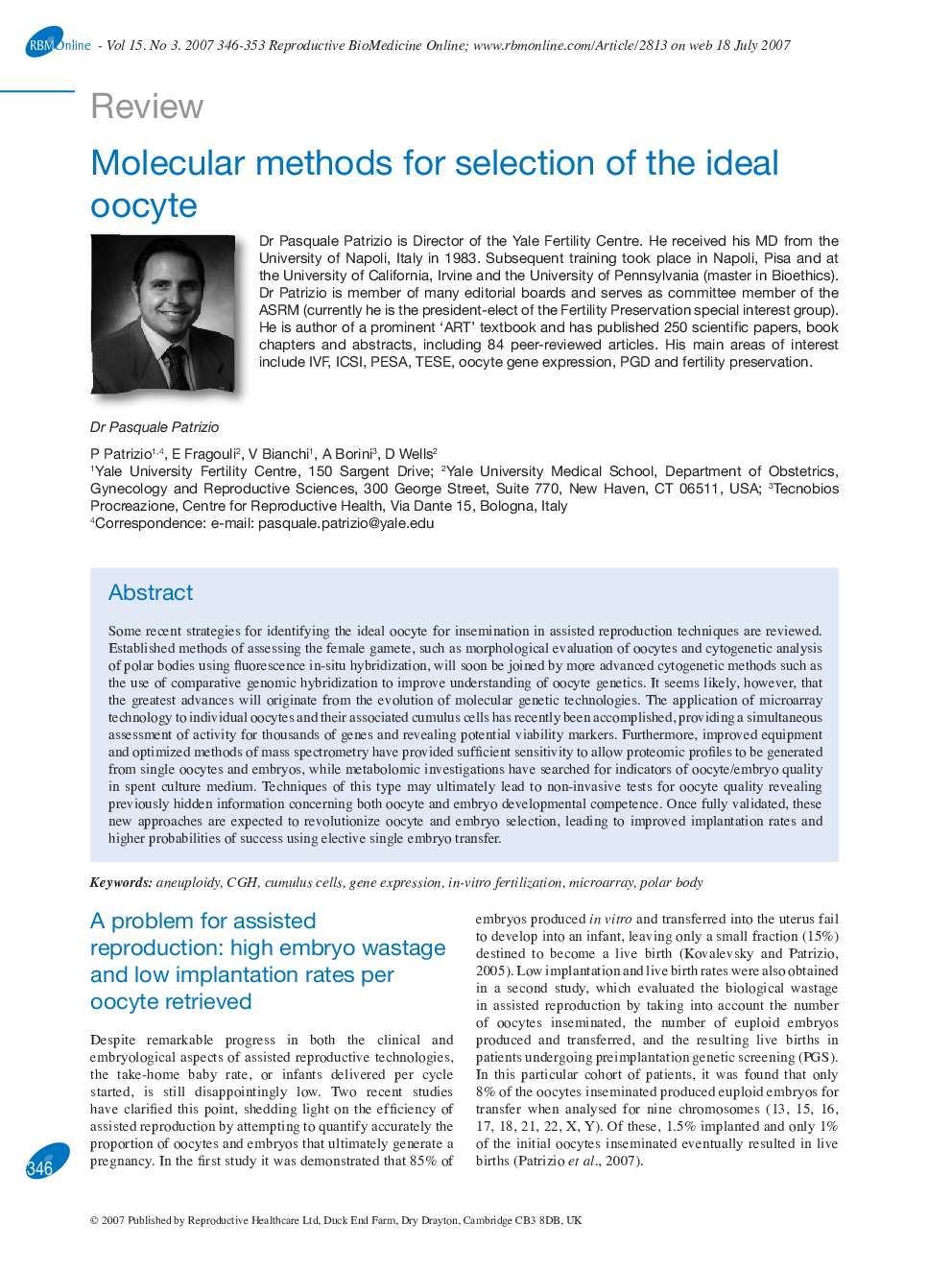| Article ID | Journal | Published Year | Pages | File Type |
|---|---|---|---|---|
| 3971465 | Reproductive BioMedicine Online | 2007 | 8 Pages |
Some recent strategies for identifying the ideal oocyte for insemination in assisted reproduction techniques are reviewed. Established methods of assessing the female gamete, such as morphological evaluation of oocytes and cytogenetic analysis of polar bodies using fluorescence in-situ hybridization, will soon be joined by more advanced cytogenetic methods such as the use of comparative genomic hybridization to improve understanding of oocyte genetics. It seems likely, however, that the greatest advances will originate from the evolution of molecular genetic technologies. The application of microarray technology to individual oocytes and their associated cumulus cells has recently been accomplished, providing a simultaneous assessment of activity for thousands of genes and revealing potential viability markers. Furthermore, improved equipment and optimized methods of mass spectrometry have provided sufficient sensitivity to allow proteomic profiles to be generated from single oocytes and embryos, while metabolomic investigations have searched for indicators of oocyte/embryo quality in spent culture medium. Techniques of this type may ultimately lead to non-invasive tests for oocyte quality revealing previously hidden information concerning both oocyte and embryo developmental competence. Once fully validated, these new approaches are expected to revolutionize oocyte and embryo selection, leading to improved implantation rates and higher probabilities of success using elective single embryo transfer.
